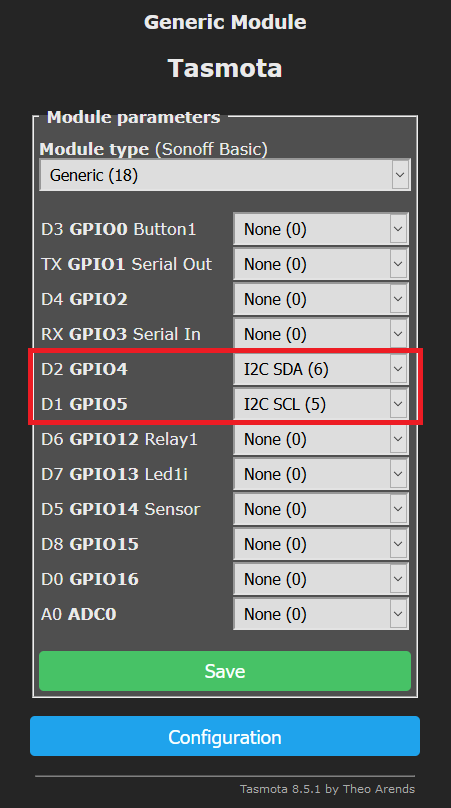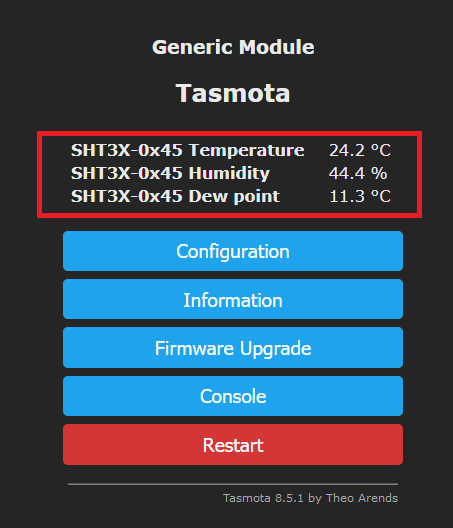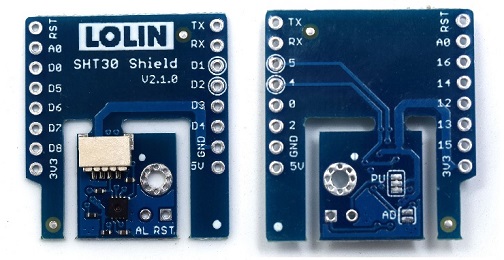SHT30 temperature sensor~
This feature is included only in tasmota-sensors and tasmota32 binaries
When compiling your build add the following to user_config_override.h:
#ifndef USE_SHT3X
#define USE_SHT3X // [I2cDriver15] Enable SHT3x (I2C address 0x44 or 0x45) or SHTC3 (I2C address 0x70) sensor (+0k7 code)
#endif
Wemos SHT30 Shield High Precision Humidity & Temperature (I2C) sensor
From the Wemos SHT30 shield specs the SDA pin on the SHT30 shield is connected to D2 and the SCL pin to D1.
Configuration~
As a default the SHT30 uses I2C address 0x45 and is user changeable by short-circuiting the two soldering pads at the lower left-side of the sensor (see image below marked green).
Also if no other I2C devices are connected to the Wemos it might be wise to short-circuit the three soldering pads at the upper left-side of the sensor (see image below marked red). This connects the pull-up resistors for I2C and biases the SCL and SDA pins to VCC. This is to avoid possible false detections of other sensors like VEML6070.
Note: On the v2.1.0 board these pads are on the rear.

Tasmota Settings~
In the Configuration -> Configure Module page assign:
- D2 GPIO4 to
I2C SDA - D1 GPIO5 to
I2C SCL

After reboot of the device the temperature, humidity and dew point are displayed.

Breakout Boards~
Three versions are known to exist, they all share the same pinout. Lolin is the new name for Wemos going forward.
- v.1.0.0 - original design (retired)
- v.2.0.0 - detachable design
- v.2.1.0 - detachable design with TFT I2C connector


